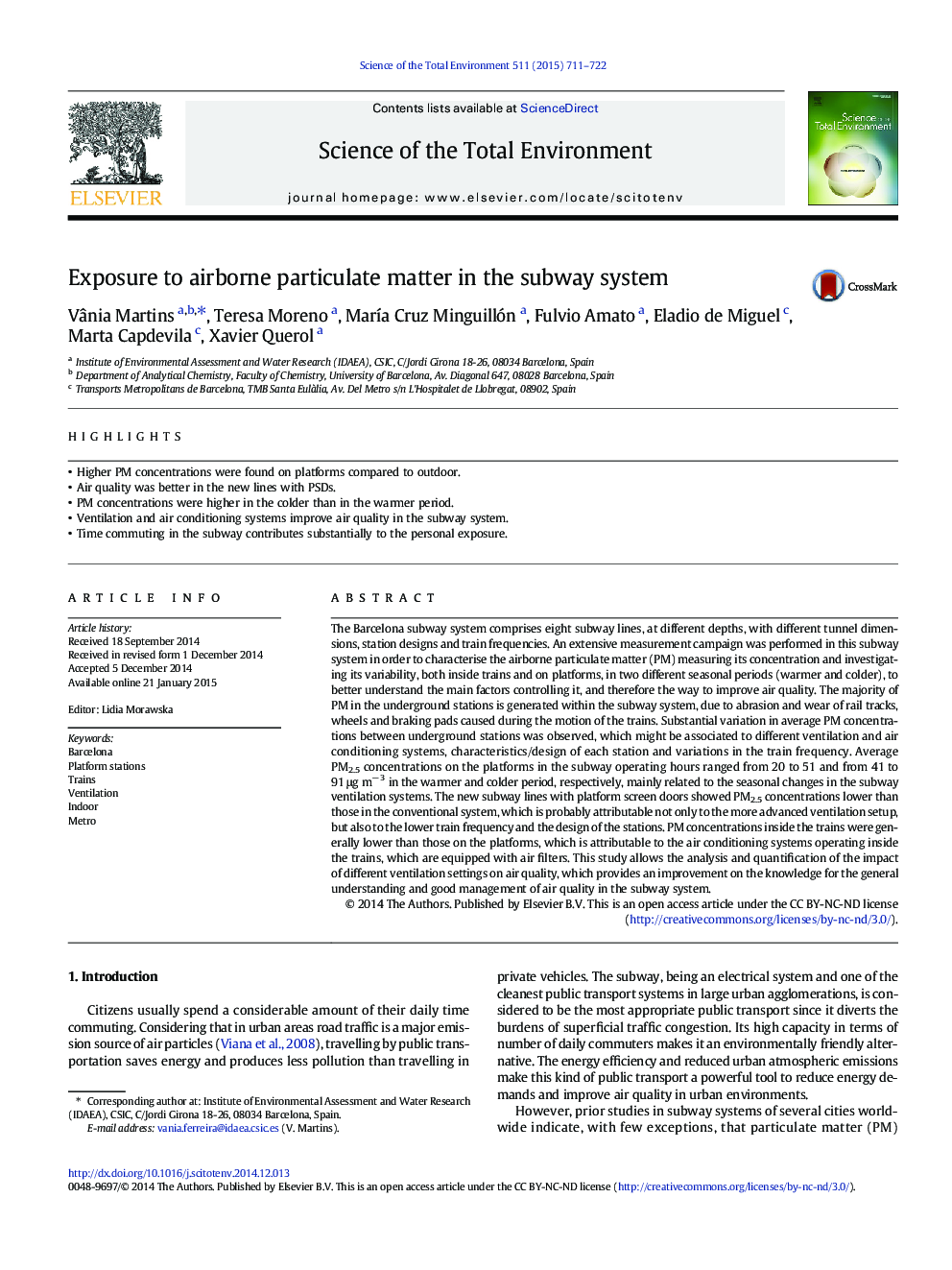| کد مقاله | کد نشریه | سال انتشار | مقاله انگلیسی | نسخه تمام متن |
|---|---|---|---|---|
| 6327587 | 1619766 | 2015 | 12 صفحه PDF | دانلود رایگان |
- Higher PM concentrations were found on platforms compared to outdoor.
- Air quality was better in the new lines with PSDs.
- PM concentrations were higher in the colder than in the warmer period.
- Ventilation and air conditioning systems improve air quality in the subway system.
- Time commuting in the subway contributes substantially to the personal exposure.
The Barcelona subway system comprises eight subway lines, at different depths, with different tunnel dimensions, station designs and train frequencies. An extensive measurement campaign was performed in this subway system in order to characterise the airborne particulate matter (PM) measuring its concentration and investigating its variability, both inside trains and on platforms, in two different seasonal periods (warmer and colder), to better understand the main factors controlling it, and therefore the way to improve air quality. The majority of PM in the underground stations is generated within the subway system, due to abrasion and wear of rail tracks, wheels and braking pads caused during the motion of the trains. Substantial variation in average PM concentrations between underground stations was observed, which might be associated to different ventilation and air conditioning systems, characteristics/design of each station and variations in the train frequency. Average PM2.5 concentrations on the platforms in the subway operating hours ranged from 20 to 51 and from 41 to 91 μg mâ 3 in the warmer and colder period, respectively, mainly related to the seasonal changes in the subway ventilation systems. The new subway lines with platform screen doors showed PM2.5 concentrations lower than those in the conventional system, which is probably attributable not only to the more advanced ventilation setup, but also to the lower train frequency and the design of the stations. PM concentrations inside the trains were generally lower than those on the platforms, which is attributable to the air conditioning systems operating inside the trains, which are equipped with air filters. This study allows the analysis and quantification of the impact of different ventilation settings on air quality, which provides an improvement on the knowledge for the general understanding and good management of air quality in the subway system.
Journal: Science of The Total Environment - Volume 511, 1 April 2015, Pages 711-722
